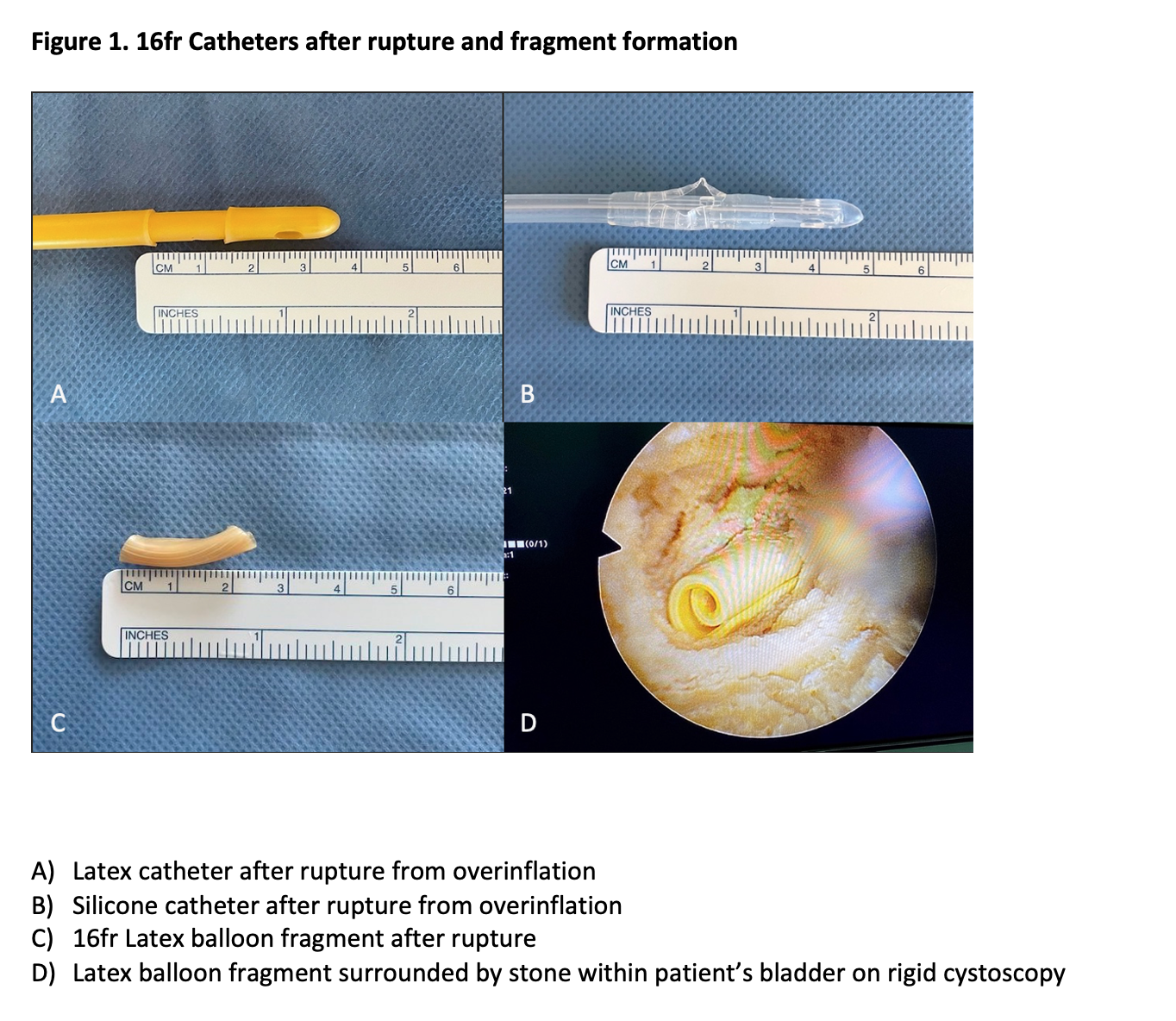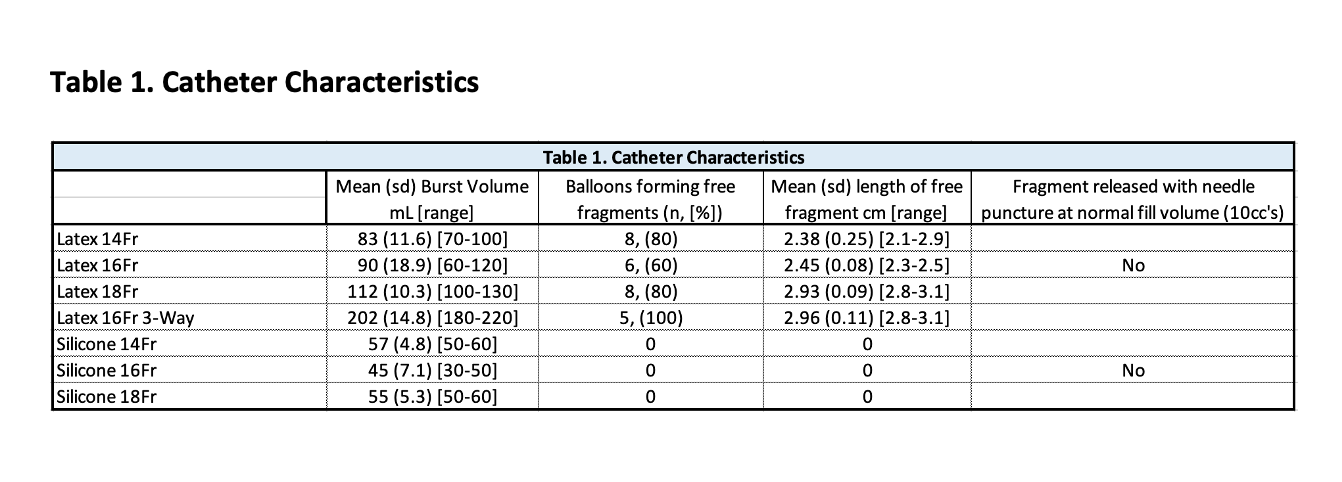Back
Poster, Podium & Video Sessions
Moderated Poster
MP16: Health Services Research: Quality Improvement & Patient Safety I
MP16-06: Foley Catheter Balloon Rupture and Risk of Free Fragment Formation
Friday, May 13, 2022
4:30 PM – 5:45 PM
Location: Room 228
Jason L. Lui*, Nathan M. Shaw, Nizar Hakam, Behnam Nabavizadeh, Behzad Abassi, Patrick Low, Kevin D. Li, Benjamin N. Breyer, San Francisco, CA
.jpg)
Jason L. Lui, BA
UCSF
Poster Presenter(s)
Introduction: Indwelling urinary catheters allow for short and long-term drainage of the bladder and are crucial to urologic care. There is a paucity of data regarding the risk of catheter balloon rupture and factors associated with balloon rupture and fragmentation are poorly defined. Catheter balloon fragmentation is of crucial clinical importance as it can serve as a nidus for stone formation and/or infection. We aimed to assess the volume of foley catheter balloon rupture and incidence of free fragment formation and to provide guidance through clinical scenarios on the management of overinflation.
Methods: A total of 85 foley catheters (45 latex catheters and 40 all-Silicone) were used. These were separated into sets of 5 or 10 identical catheters across common sizes, including 14, 16, and 18 French (fr), and inflated sequentially with 10mL of sterile water in an aqueous environment without positive pressure. Catheters were monitored for rupture and fragmentation. The number of catheters producing free fragments and fragment size was recorded. The maximum instilled volume prior to rupture (“burst volume”) was recorded. An additional subset of catheters were inflated to recommended balloon volume and the balloon was then punctured with needle.
Results: Of the 35 latex catheters, 27 (77.1%) produced a free fragment during spontaneous rupture. Fragments ranged from 2.1cm to 3.1cm with a standard deviation of 0.31. Latex catheters had average burst volume of 83, 90, and 112, and 202mL for 14Fr, 16Fr, 18Fr, and 16Fr 3-Way, respectively. Of the 30 silicone catheters, no fragments were noted from spontaneous rupture. The average burst volume for silicone catheters was 57, 45, and 55mL for 14Fr, 16Fr, and 18Fr, respectively. The latex and silicone catheters inflated to recommended volumes and ruptured did not produce fragments.
Conclusions: All catheters can be inflated to higher volumes than the manufacturer recommendation, with latex catheters having a high likelihood (>75%) of releasing fragments at peak volumes. At normal fill volumes, needle puncture does not generate fragments.
Source of Funding: Kevan and Anita Del Grande


Methods: A total of 85 foley catheters (45 latex catheters and 40 all-Silicone) were used. These were separated into sets of 5 or 10 identical catheters across common sizes, including 14, 16, and 18 French (fr), and inflated sequentially with 10mL of sterile water in an aqueous environment without positive pressure. Catheters were monitored for rupture and fragmentation. The number of catheters producing free fragments and fragment size was recorded. The maximum instilled volume prior to rupture (“burst volume”) was recorded. An additional subset of catheters were inflated to recommended balloon volume and the balloon was then punctured with needle.
Results: Of the 35 latex catheters, 27 (77.1%) produced a free fragment during spontaneous rupture. Fragments ranged from 2.1cm to 3.1cm with a standard deviation of 0.31. Latex catheters had average burst volume of 83, 90, and 112, and 202mL for 14Fr, 16Fr, 18Fr, and 16Fr 3-Way, respectively. Of the 30 silicone catheters, no fragments were noted from spontaneous rupture. The average burst volume for silicone catheters was 57, 45, and 55mL for 14Fr, 16Fr, and 18Fr, respectively. The latex and silicone catheters inflated to recommended volumes and ruptured did not produce fragments.
Conclusions: All catheters can be inflated to higher volumes than the manufacturer recommendation, with latex catheters having a high likelihood (>75%) of releasing fragments at peak volumes. At normal fill volumes, needle puncture does not generate fragments.
Source of Funding: Kevan and Anita Del Grande



.jpg)
.jpg)